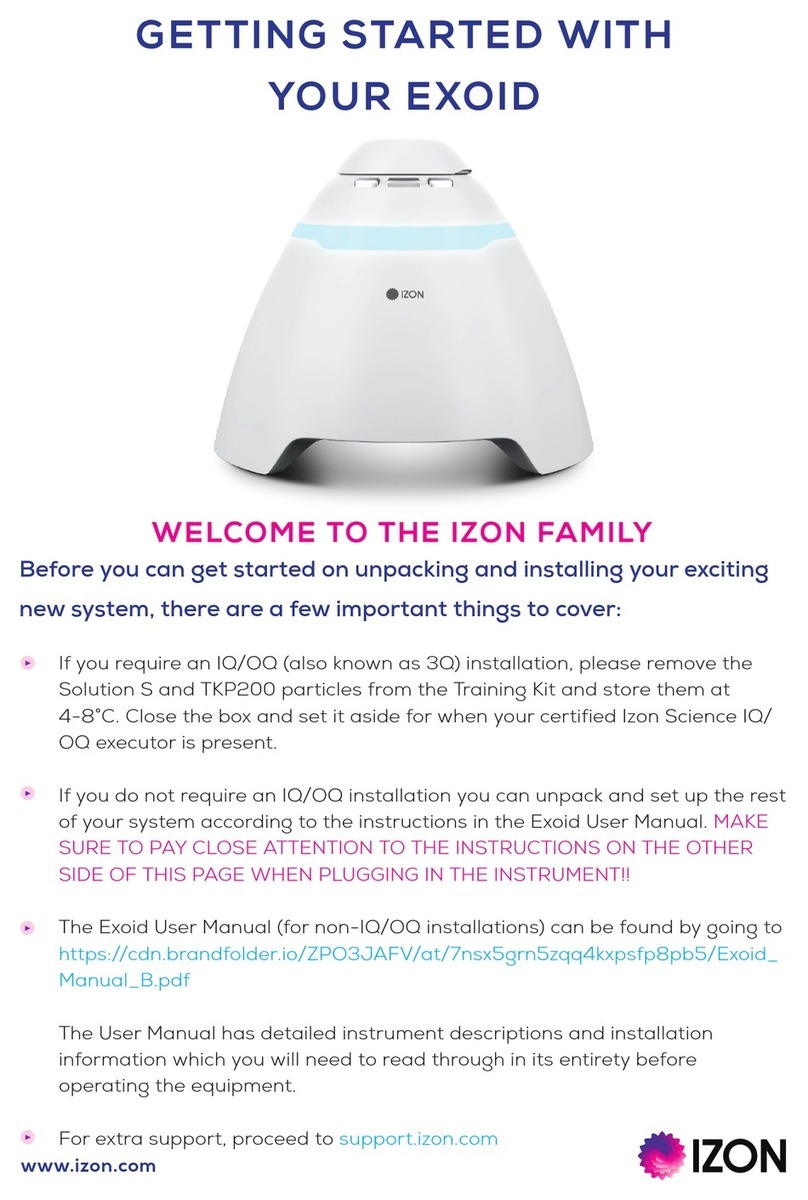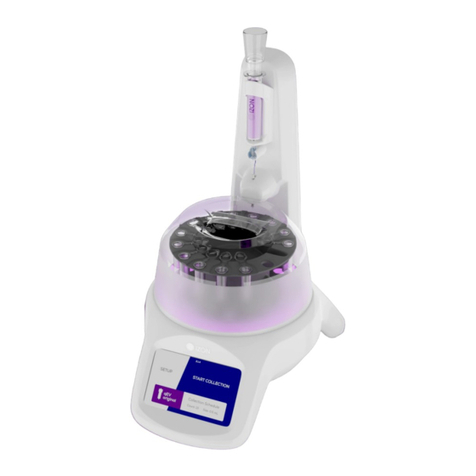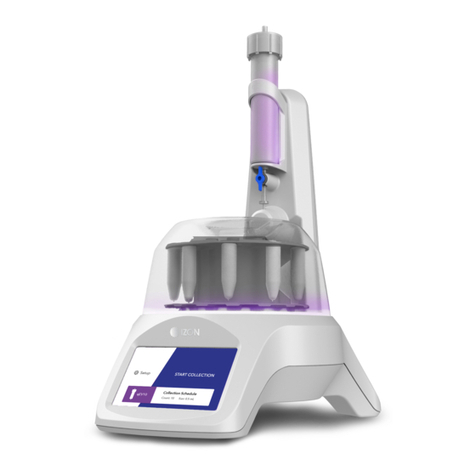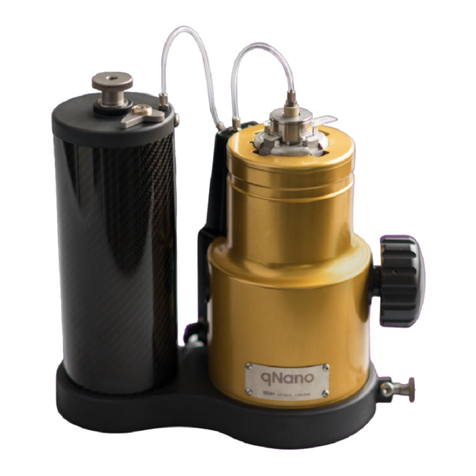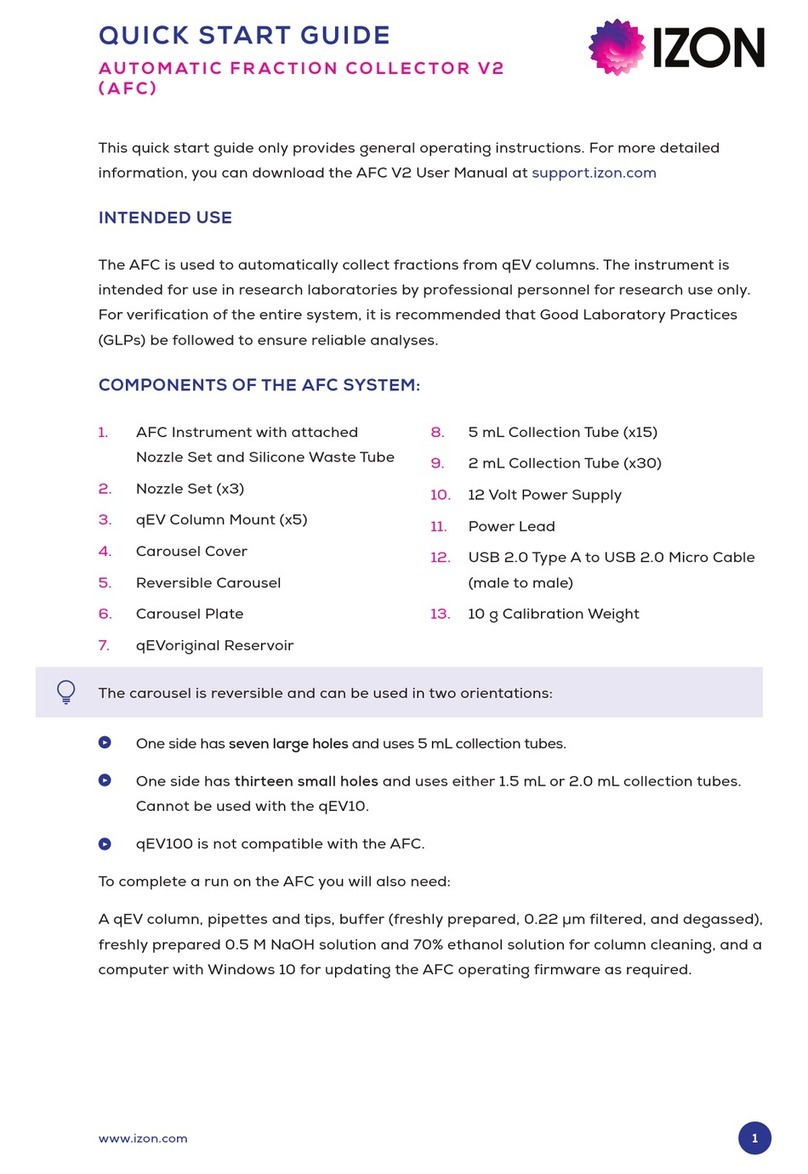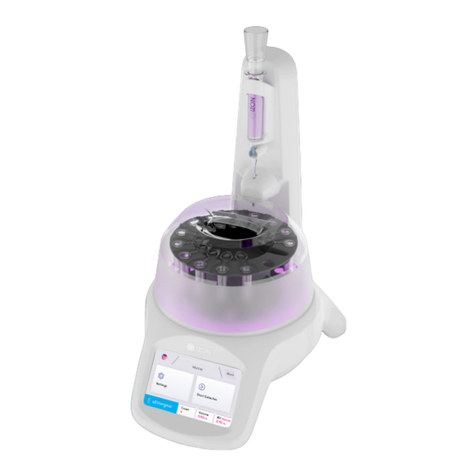
TABLE OF CONTENTS
1 Definitions and Writing Conventions.......................................................................................................... 4
2 Safety and Hazards........................................................................................................................................ 6
2.1 Safe Use Requirements and Specifications ...................................................................................................6
2.2 Hazards.......................................................................................................................................................................6
3 Introduction to the Automatic Fraction Collector (AFC) ..................................................................... 10
3.1 Overview................................................................................................................................................................... 10
3.2 Intended Use ............................................................................................................................................................ 11
4 Instrument Specifications ............................................................................................................................12
4.1 Instrument Layout................................................................................................................................................. 12
5 Assembly and Setup Instructions ..............................................................................................................15
5.1 Instrument Power and General Operating Procedures............................................................................ 15
5.2 General Operating Procedures......................................................................................................................... 15
5.3 Assembling and Installing the AFC.................................................................................................................. 15
5.4 Aligning the Carousel ........................................................................................................................................... 16
5.5 Calibrating the Load Cell..................................................................................................................................... 18
5.6 Adjusting Lighting Settings ................................................................................................................................ 18
6 qEV Specifications .........................................................................................................................................19
7 Operating Instructions..................................................................................................................................21
7.1 Setting Up a Run.................................................................................................................................................... 21
7.2 Choosing Run Parameters................................................................................................................................. 22
7.3 Initiating a Run........................................................................................................................................................27
7.4 Completing a Run ................................................................................................................................................. 29
8 Resources........................................................................................................................................................30
8.1 Repair and Servicing of AFC Instrument ........................................................................................................... 30
8.2 Updating the AFC Firmware............................................................................................................................. 30
8.3 Maintenance of AFC Instrument ..................................................................................................................... 32
8.4 Troubleshooting..................................................................................................................................................... 36
Automatic Fraction Collector V2 User Manual 3






